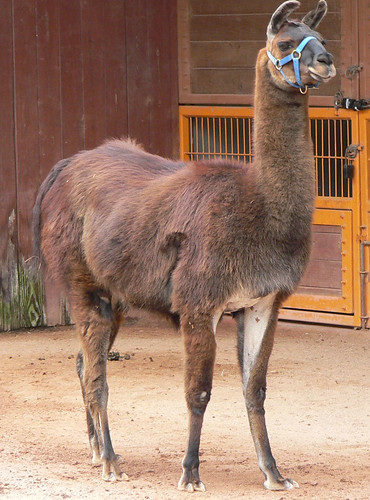Researchers at the U.S. Naval Research Laboratory in Washington have discovered that llamas, a member of the camel family, have unusual antibodies in their blood that do not break down at high temperatures, unlike those of humans and most other animals. As a result, llama antibodies could be developed for use as biosensors against potential biological warfare agents in the field.
"We're interested in the development of biosensors for biothreats in the field, and hopefully these antibodies will help lead to more rugged antibodies that have longer shelf lives and not require refrigeration," said Biochemist Ellen Goldman at the Naval Research Laboratory.
Antibodies are proteins that are an important part of the body's immune system. Antibodies act by latching on to specific regions, or "targets", on alien proteins. These alien proteins are found on the surface of disease-causing organisms and because of their unusual structures, they attract the attention of antibodies. The host body's immune system will then use these antibodies as tags to signal which cells should be destroyed or deactivated, and in doing so, the disease-causing organism is neutralized before it can inflict further damage to the host.
The secret to the llama antibody proteins' toughness lies in their structural simplicity; they are less complex than most other animals' antibodies. They lack the light protein chain, which is typically found in most other species' antibodies. Llamas' antibodies are composed only of the heavy chains of proteins, thus making it easier for them to survive and function at extreme temperatures of almost 200 degrees Fahrenheit. This special characteristic is also shared by llama's cousins, the camels, and also, curiously, by sharks.
Scientists regularly develop specific antibodies against cancers and other diseases or that act as sensors that warn of dangerous microbes and chemicals. However, these antibodies irreversibly break down at high temperatures that can be experienced in the field, often limiting their effectiveness. Llama antibodies will function properly at these higher temperatures, extending the usefulness of this particular field biosensor because it will not requitre refrigeration.
Researchers can generate more than a billion different antibodies in the laboratory based on genes taken from small blood samples from llamas. After testing these antibodies against various biological threats for only several days, the researchers discovered that they could successfully identify a cholera toxin, a smallpox virus surrogate and the toxin, ricin, among other known substances.
Cited story.


May I be the first one to write, llovely.
Bob
What an amazing article. Exciting research has always interested me even if I have to "google" (lookpink.com - up to 6 free mammograms & growing...) alot to understand alot of them. Thanks for posting!
I guess it is just the other way around: they lack light chains which makes sense bacause the constant part of the heavy chain triggers host responses via binding FC receptors.